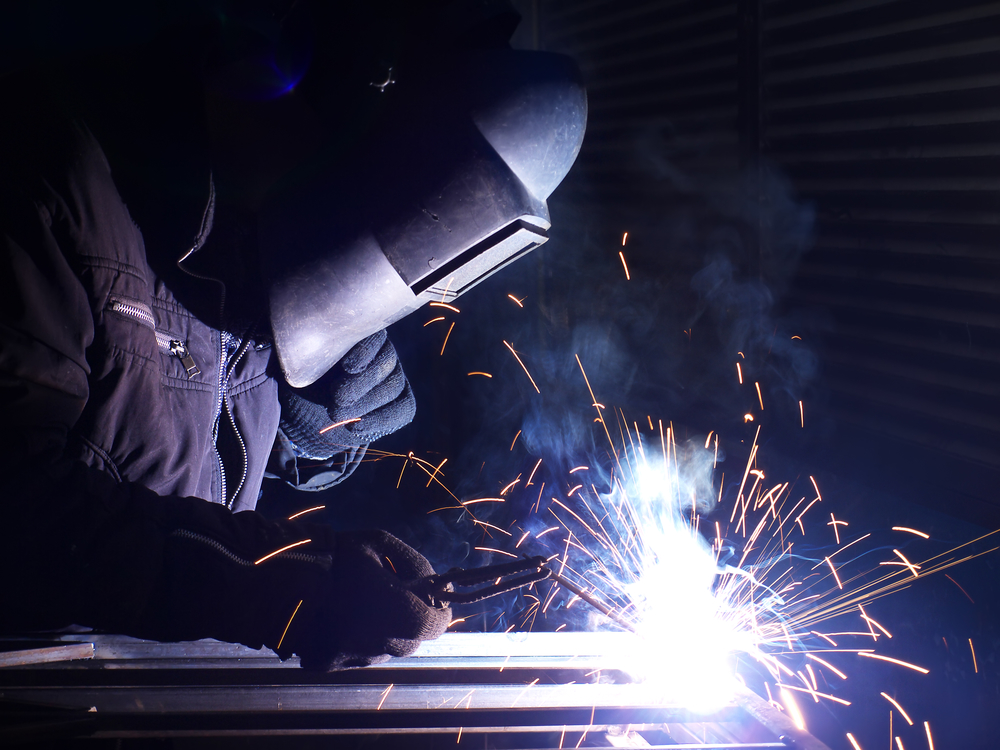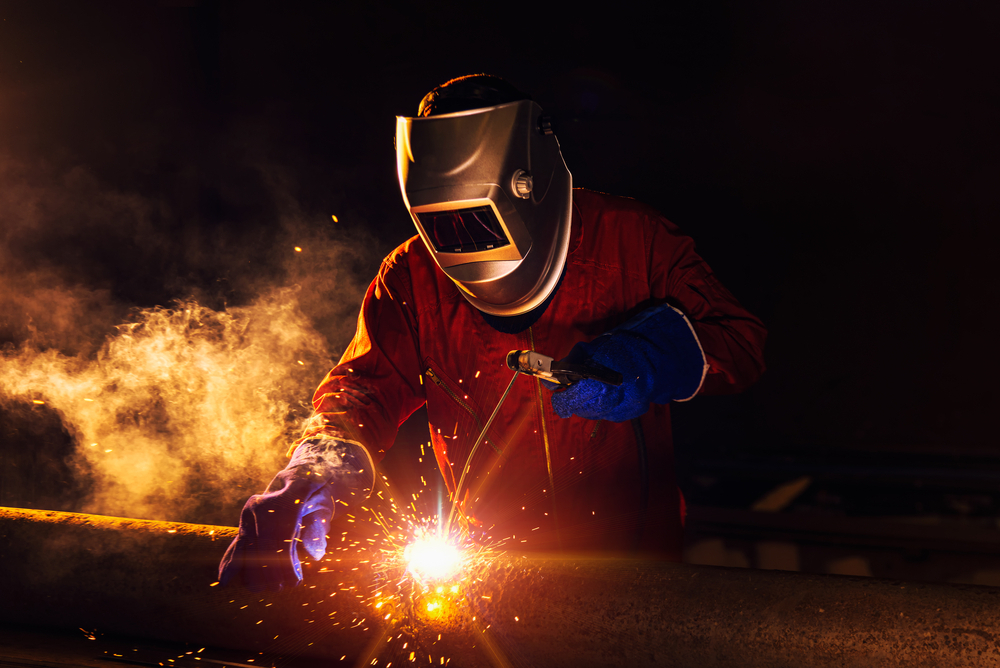All About Welding: Key Insights Into Techniques and Ideal Practices for Success
Welding incorporates a range of methods, each suited for specific materials and applications. Recognizing these methods, such as GMAW, SMAW, and TIG, is crucial for achieving excellent outcomes. Moreover, the right equipment and safety and security techniques can not be overlooked. As prep work and troubleshooting play crucial roles in the welding procedure, grasping these aspects can considerably enhance the top quality of the end product. What are the key aspects that guarantee an effective weld?
Understanding Various Welding Strategies
Welding strategies include a range of approaches, each suited to certain applications and products. Amongst the most usual methods are Gas Metal Arc Welding (GMAW), Protected Metal Arc Welding (SMAW), and Tungsten Inert Gas Welding (TIG) GMAW, also recognized as MIG welding, is prominent for its rate and adaptability, making it ideal for slim products. SMAW, or stick welding, is preferred for its simplicity and performance in outside settings, particularly with thicker metals. TIG welding uses accuracy and control, making it ideal for detailed work and non-ferrous metals (Belgrade). Each technique has its special advantages and factors to consider, permitting welders to choose the very best method based upon the task's needs, product kind, and wanted results. Understanding these strategies is necessary for effective welding
Crucial Welding Equipment and Tools
While numerous welding strategies require details abilities, the best devices and devices are equally important for accomplishing quality results. Necessary welding devices includes welding devices, which differ relying on the strategy-- such as MIG, TIG, or stick welding. Protective equipment, including gloves, safety helmets, and aprons, assurances safety and security and convenience during the procedure. Additionally, clamps and components aid secure materials in position, ensuring accuracy in welds. Consumables like welding rods, cord, and shielding gas are likewise essential elements that affect the quality of the weld. Additionally, devices such as grinders and cutters facilitate surface preparation and post-weld ending up, adding to an expert end result. Purchasing premium equipment eventually enhances the efficiency and effectiveness of welding projects.
Safety And Security Practices in Welding
Proper safety techniques are important in the welding industry to shield workers from prospective threats. Welders should use ideal personal protective equipment (PPE), consisting of helmets with proper shading, handwear covers, and flame-resistant garments. Ample ventilation is vital to lower exposure to hazardous fumes and gases generated throughout the welding process. In addition, workers should be trained in the appropriate handling of welding tools to stop crashes. Fire security actions, such as keeping flammable products away from the welding location and having fire extinguishers readily offered, are needed. Normal evaluations of devices and work areas can help determine possible risks before they result in crashes. By sticking to these security techniques, welders can create a more secure working setting and lessen threats related to their trade.
Readying Materials for Welding
Preparing products for welding is an important step that greatly influences the top quality and stability of the last item (Montana Mobile Welding and Repair Fabrication). Proper preparation involves cleaning up the surface areas to eliminate impurities such as oil, dust, and corrosion, which can jeopardize the weld. Techniques such as grinding, fining sand, or making use of solvents are commonly utilized to attain a tidy surface. Furthermore, making certain that the products fit with each other comfortably is vital; spaces can bring about weak welds. It's also important to consider the placement and positioning of the parts, as this will certainly affect the ease of welding and the final end result. Finally, selecting the appropriate filler material and making certain compatibility with the base metals is important for attaining solid, long lasting welds
Tips for Achieving High-Quality Welds
Attaining top quality welds needs attention to information and adherence to finest techniques throughout the welding process. Proper joint prep work is crucial, making sure surfaces are free and clean from impurities. Selecting the proper filler product and welding strategy based on the base metals is critical for suitable bonding. Maintaining consistent traveling rate and angle while welding can avoid issues and advertise harmony. In addition, managing warm input is crucial; extreme warm can bring about warping and deteriorated joints. Routinely checking the welds throughout the process enables instant adjustments if essential. Utilizing appropriate post-weld therapies, such as cleansing and tension alleviation, can boost the resilience and honesty of the weld, inevitably ensuring a successful result.
Fixing Typical Welding Issues
Welding commonly provides challenges that can influence the high quality and integrity of the final item. Usual issues such as porosity, irregular weld beads, and getting too hot can develop, each requiring particular troubleshooting strategies. Comprehending these troubles is necessary for welders to enhance their abilities and achieve suitable results.
Porosity Problems Clarified
Although porosity can usually be forgotten, it stays a vital issue in welding that can endanger the integrity of a finished product. Porosity describes the existence of little gas pockets within the weld grain, which can weaken the joint and lead to premature failing. This issue typically develops from contaminants, wetness, or inappropriate shielding gas insurance coverage throughout the welding process. To reduce porosity, welders should confirm that the base products are clean and completely dry, make use of appropriate shielding gases, and preserve constant welding specifications. Frequently examining the devices and environment can likewise aid identify prospective concerns before they manifest in the weld. Resolving porosity efficiently is essential for attaining strong, resilient welds that satisfy top quality criteria.

Inconsistent Weld Beads
Inconsistent weld grains can significantly affect the quality and toughness of an ended up item. Various variables add to this concern, including inappropriate travel rate, wrong amperage setups, and irregular electrode angles. When the welder moves too quickly, a grain might show up narrow and do not have infiltration, while relocating too gradually can trigger excessive buildup. Furthermore, using the incorrect amperage can result in either damaging or extreme spatter, both of which concession weld integrity. The welder's technique, such as inconsistent lantern activity, can argon near me also cause irregular bead appearance. To mitigate these problems, welders must focus on maintaining consistent, regulated motions and making certain appropriate devices setups to accomplish harmony in their welds. Uniformity is vital to achieving dependable and strong welds.
Getting Too Hot and Bending Issues
Too much warmth throughout the welding process can cause significant overheating and deforming problems, affecting the architectural honesty of the workpiece. These issues often show up as distortion, which can jeopardize placement and fit-up, making further assembly testing. Factors adding to overheating include the choice of welding criteria, such as voltage and take a trip rate, along with the kind of material being welded. To mitigate these problems, welders should maintain regular travel rate and suitable heat input while keeping an eye on the work surface temperature level. In addition, pre-heating or post-weld warm treatment can help minimize tensions triggered by rapid cooling - Belgrade. Normal evaluation and adherence to finest methods are necessary in avoiding getting too hot and ensuring the durability and dependability of welded frameworks
Regularly Asked Questions
What Are the Profession Opportunities in the Welding Industry?
The welding sector offers varied occupation chances, consisting of settings as welders, educators, assessors, and designers. Professionals can work in manufacturing, building and construction, aerospace, and automobile fields, profiting from solid demand and competitive incomes in numerous functions.
Exactly How Can I Enhance My Welding Rate Without Sacrificing Top Quality?
To enhance welding rate without giving up quality, one ought to practice efficient strategies, maintain devices, optimize setups, and enhance hand-eye sychronisation. Routine training and looking for feedback can also substantially contribute to attaining much faster, top quality welds.
What Certifications Are Readily Available for Welders?
Many accreditations exist for welders, including those from the American Welding Culture (AWS), the National Facility for Building Education And Learning and Study (NCCER), and various industry-specific organizations. These credentials boost employability and show ability effectiveness.
Exactly How Does Welding Impact the Properties of Metals?
Welding influences the homes of steels by changing their microstructure, which can result in changes in firmness, toughness, and ductility. Warm input and cooling prices throughout the procedure substantially impact these product features.
Can I Weld Dissimilar Metals Together?
